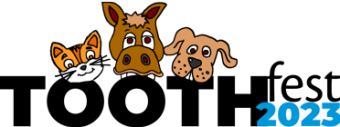Choke is a not so uncommon problem in horses, and can lead to devastating consequences, so it is a condition that owners and trainers need to become educated about.
Unlike in people, where choking refers to a blocked airway, "choke" in horses is referring to a blockage of the oesophagus - the tubular part of the gastro-intestinal tract that carries food boluses from the throat to the stomach.
Signs of a horse choking could include it bracing its neck and retching its neck forward:
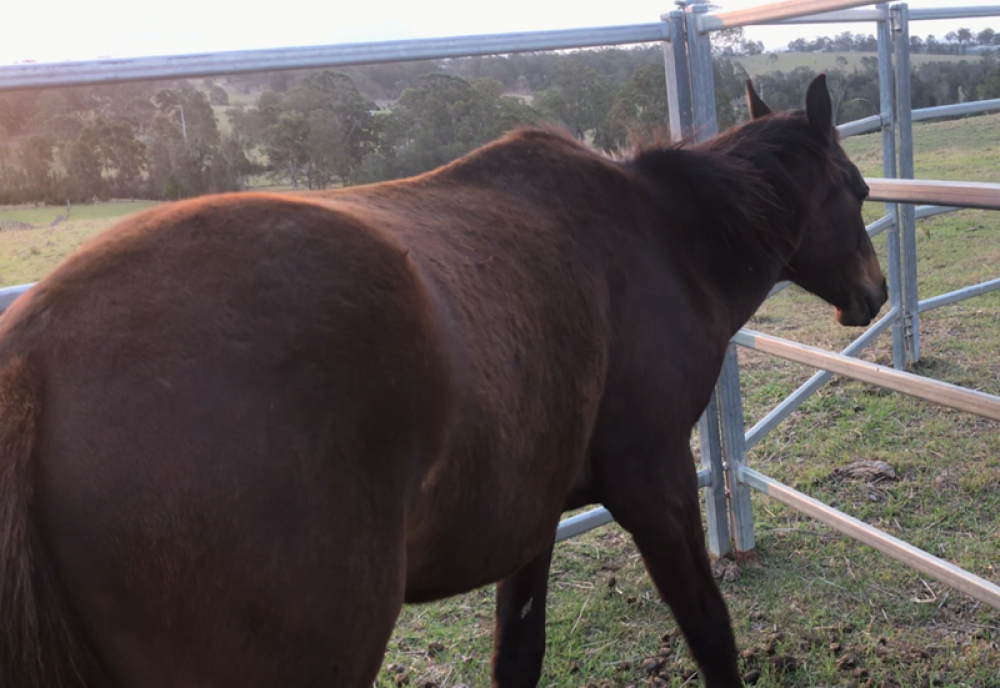
or food coloured fluid running out of both nostrils, or the horse salivating:
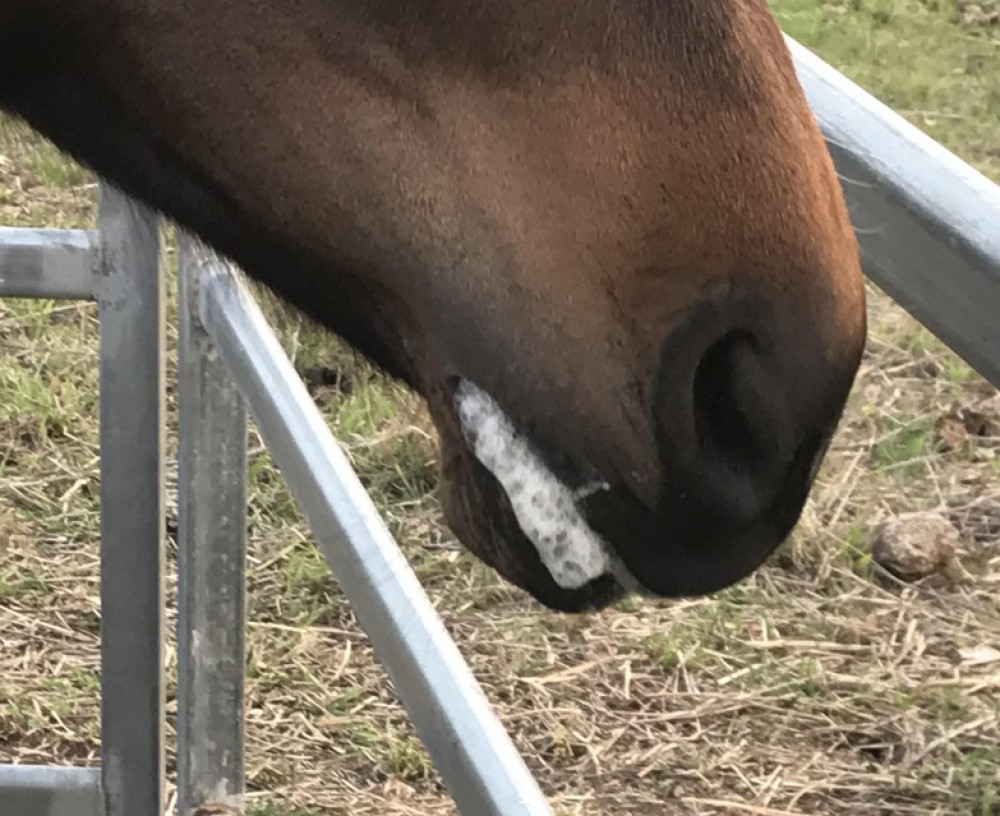
or even the horse laying down and/or rolling as seen with colic (abdominal pain):
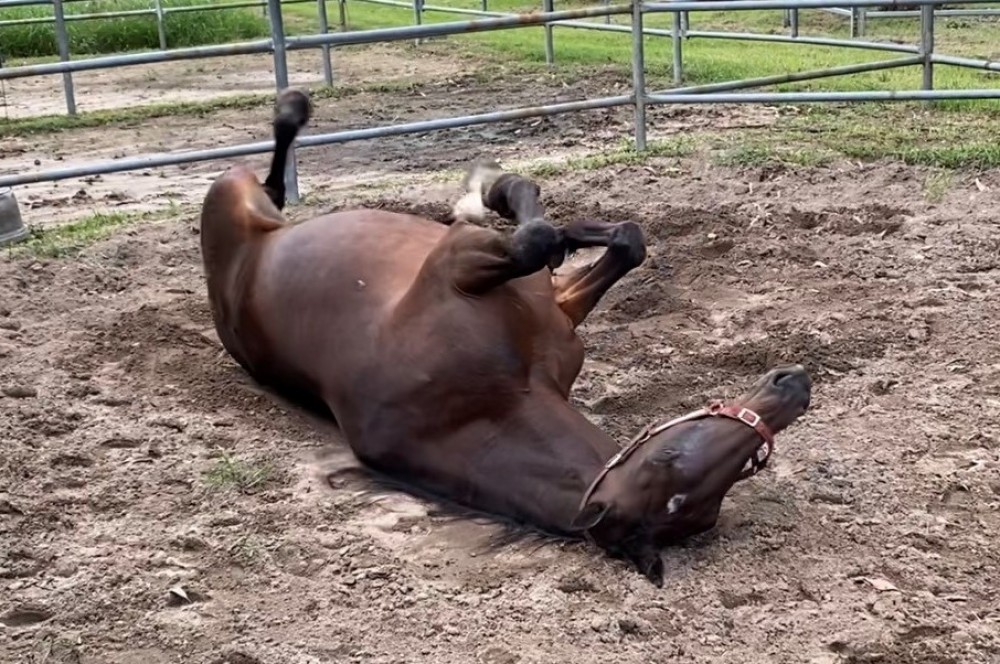
The blockage usually comprises of a mass of poorly chewed food. But it can also be a foreign body like a ball of chewed up lead rope. The poorly chewed food will not be adequately moistened and lubricated with saliva, and so does not freely travel along the tube pushed by gentle muscular contractions of the oesophageal wall. Or it may be an improperly chewed piece of carrot for example.
Reasons for the poorly chewed feed include the horse rushing or gutsing down some dry pellets or feedstuffs if it is very hungry or in a hurry to eat the food before a herd mate chases them away.
Bad teeth are another common reason for choking, as the horse cannot or does not want to chew the food properly due to dysfunctional teeth or pain. So then it tries to swallow the food before it has been chewed properly and moistened into a spindle shaped and slippery bolus ready to be swallowed. The food then gets stuck somewhere along the oesophagus tube, and then anything the horse keeps eating will be unable to pass to the stomach, and a back log of food and saliva will overflow out the nostrils and mouth.
A condition that is similar in presentation to choke is when the horse gets a piece of wood stuck across the roof of its mouth

and that can show as salivating and opening the mouth strangely when trying to eat.
If the horse cannot swallow the food and saliva, it then either runs out the nose, or even worse, runs down into the trachea (wind-pipe) to the lungs.
Sometimes the horse will manage to clear the obstruction itself in the first 10 minutes or so. But if it does not clear itself, then it could be in real danger of ongoing problems.
Should the owner suspect the horse is choking, it is important to prevent the horse from eating more food that would make the condition worse. You can do that by taking the food away, and/or by muzzling the horse with a nose bag, or a bucket with holes cut in the bottom of it.
Then the owner should phone their emergency vet to alert them that they may be needed soon.
If the owner sees the horses choke on its food, then sometimes a hose placed in the front of the mouth to rinse out the mouth, and then encourage the horse to swallow some saliva and water can moisten a newly blocked or minimally blocked oesophagus. But this procedure is frowned upon by many experts, as it also carries a real risk of forcing the horse to aspirate some of the hose water into the lungs and this can lead to life threatening pneumonia.
Massaging of the neck can also be done to attempt to move the blockage along:
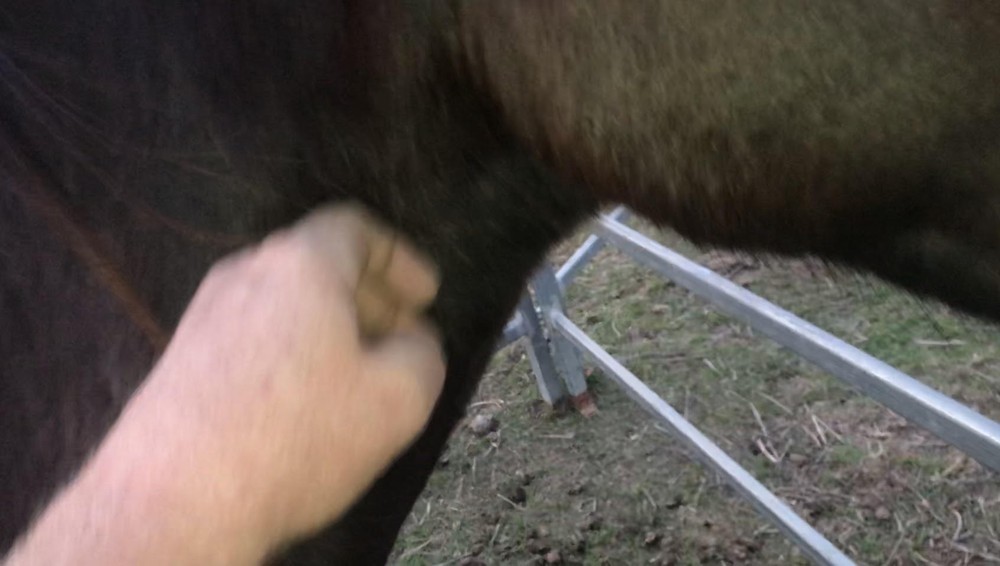
but that would only be of benefit in very early cases, and if the blockage was actually in the neck part of the oesophagus. Unfortunately, most choke blockages occur inside the chest cavity where massaging of the oesophagus is impossible.
If the horse has been choking for hours, then a hose in the mouth will be more harmful than beneficial. And it is also worth considering that other conditions can resemble a choke episode and one of them is Hendra Virus infection. So, ensure that you protect yourself and any other handlers in the way of wearing appropriate Personal Protection Equipment (PPE) when handling any sick or injured horse.
Like so many medical emergencies in horses in Australia now, the process of getting an emergency veterinarian to attend will be so much easier and straight forward if the sick or injured horse is currently vaccinated against Hendra Virus.
The attending emergency vet will assess the horse and confirm or rule out if it is choking. This is often done by passing a nasogastric stomach tube, with or without the horse sedated.
If the blockage is not easy to relieve, sometimes a muscle relaxant is given, and other times, intravenous fluids, antibiotics, anti-inflammatories etc are needed. If the choke is severe and cannot be unblocked, then sometimes referral to a clinic where the oesophagus can be scoped to see directly what is blocking it is required. Sometime a defect or stricture in the oesophagus is the cause.
Severe chokes carry the risk of the oesophagus rupturing and causing a life-threatening chest infection. They also can cause aspiration of food and saliva into the lungs leading to life threatening pneumonia.
For that reason, it is important to monitor closely patients who have been treated for choke. Monitoring their temperature two to three times daily will often alert the owner of any fever that may accompany a developing pneumonia. Other signs include a cough, dullness, not wanting to eat, sore feet from laminitis, rapid or laboured breathing, painful ribs etc.
Sometimes the vet will start the choke patient on antibiotic coverage as well. Keeping the horse out grazing with its head down, minimising dust inhalation, wetting the feed are also often part of the nursing aftercare of a choke patient.
Going forward and to help prevent a recurrence of a choke episode, several things need to be done.
Firstly, a thorough oral examination by an experienced equine dental veterinarian to look for causes of chewing difficulties. Then making sure there is not social pressure from herd mates for the horse to rush its food down. For example, if there are 3 horses being hand fed in a paddock, then make sure there are 4 feeders for them to choose from, so that the bottom of the pecking order is not so pressured to rush its food. Also, to ensure the feed is appropriately either wetted down, or mixed with fibre, so the horse needs to chew it enough so that adequate amounts of lubricating saliva mix with the food prior to swallowing.
Another tip is to add some large (10-15 cm diameter) rocks to the feed bin, to help slow the horse down.
In summing up, this is not an uncommon problem in horses, and some horses do choke repeatedly, so it is best to know how and what you will do in times of a choke episode.

